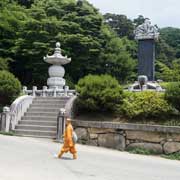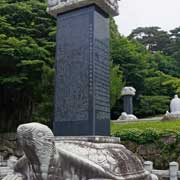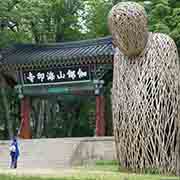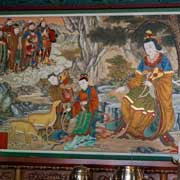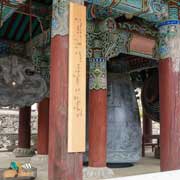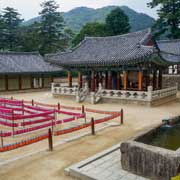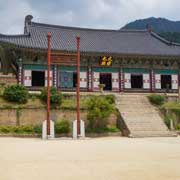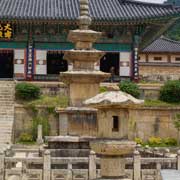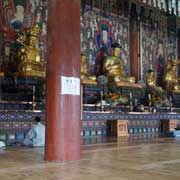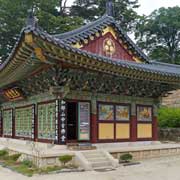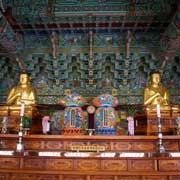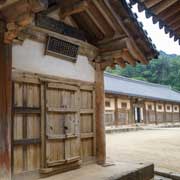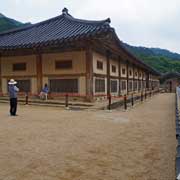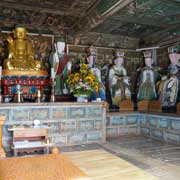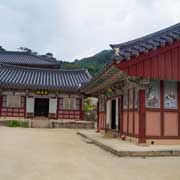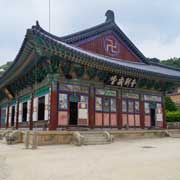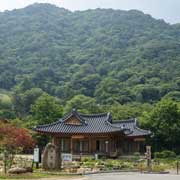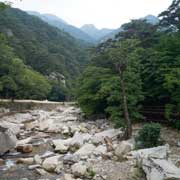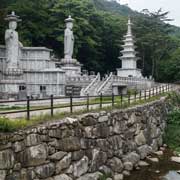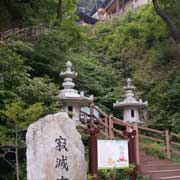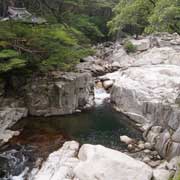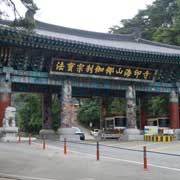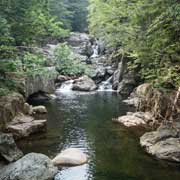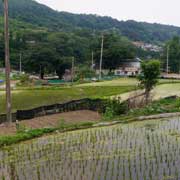Photos of Haeinsa Temple, South Gyeongsang Province, Korea
Haeinsa Temple, South Gyeongsang Province
Haeinsa, the “Temple of Reflection on a Smooth Sea”, is a head temple of the Jogye Order of Korean Buddhism near Hapcheon in the Gaya Mountains of Gyeongsangnam-do (South Gyeongsang Province). It is one of the Three Jewel Temples of Korea and represents Dharma or the Buddha’s teachings. Haeinsa was founded in 802 by two monks, Suneung and Ijungin, during the rule of King Aejang of Silla, who ruled from 800 to 809. The name “Haein” originates from the expression Haeinsammae of Hwaeomgyeong (Buddhist scripture), which means a truly enlightened world of Buddha and our naturally undefiled mind.
you may then send it as a postcard if you wish.
The temple’s main hall, Daejokgwangjeon (Hall of Great Silence and Light), was constructed in 1818 and is dedicated to Vairocana Buddha; an ancient three-story stone pagoda and lantern stand in front of it. Probably the most important structure is Janggyeong Panjeon, the storage halls of the Tripitaka Koreana, the whole of the Buddhist Scriptures carved onto 81,340 wooden printing blocks. Starting in 1236, during the rule of King Gojong of the Goryeo dynasty, it took 16 years to finish the Tripitaka Koreana to overcome a national crisis caused by the Mongolian Invasions from the 1230s until the 1270s. The work was probably motivated by King Gojong’s hopes to change the country’s fortunes through the act of religious devotion. However, the Mongols later destroyed the originals - the existing Tripitaka is a replica of Gojong’s original and was commissioned around one hundred years after the originals were lost. Since 1398 they have been housed in the Janggyeong Panjeon, some of the largest wooden storage facilities in the world. At the highest point of the Haeinsa temple complex, it is its oldest structure and built to such a clever design that it has been able to conserve the precious wooden printing blocks perfectly over those centuries.
Hongnyudong valley, a 4-kilometre long valley in Gayasan National Park, stretches from the entrance of Haeinsa to the Tripitaka Koreana Record Culture Theme Park in the village of Hapcheon. It offers the historical background behind the creation and collection of the Tripitaka and captures the hidden scientific technology that has kept the Tripitaka alive for over a thousand years.



